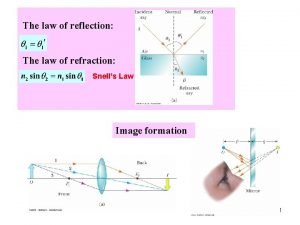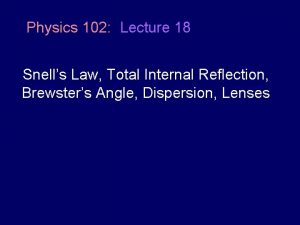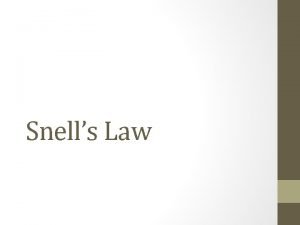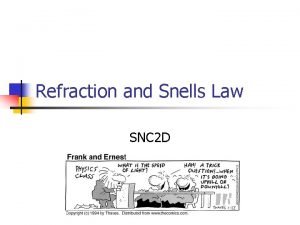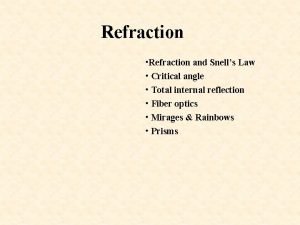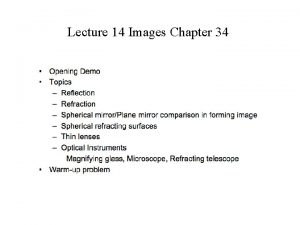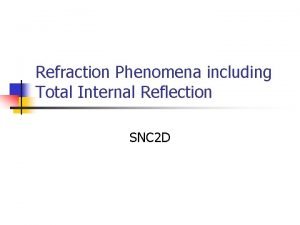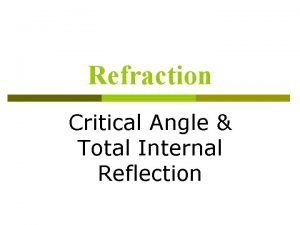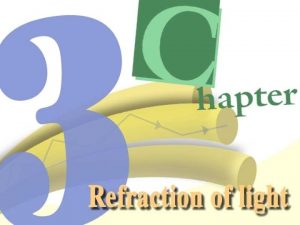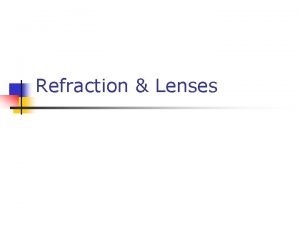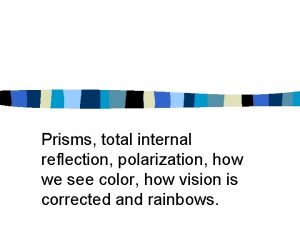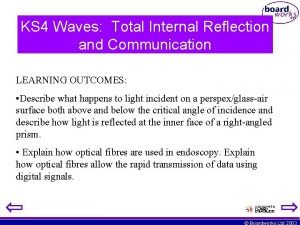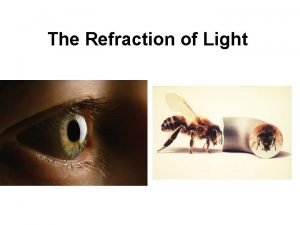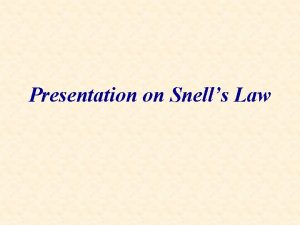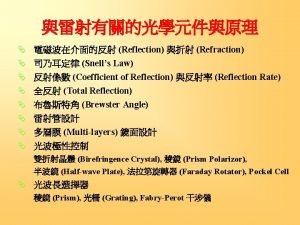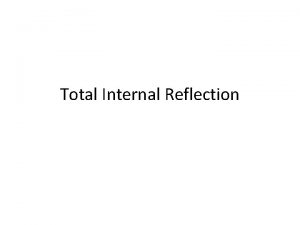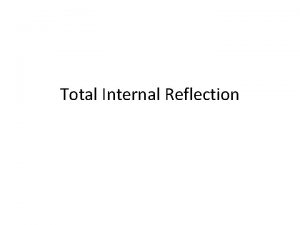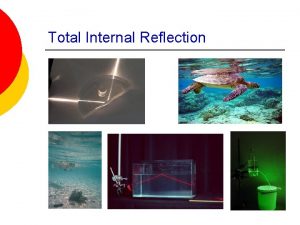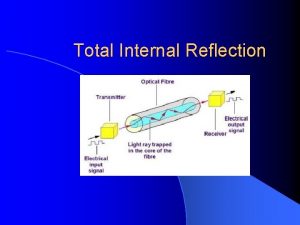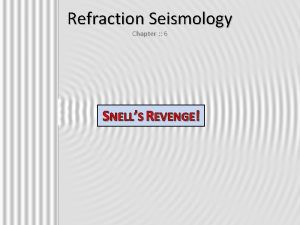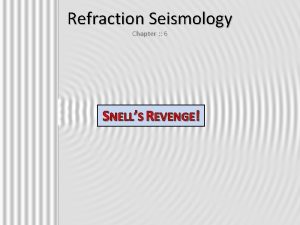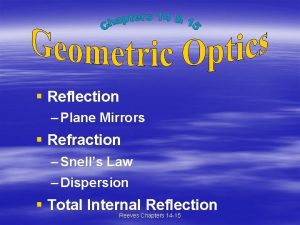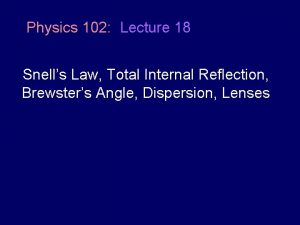Lesson 9 TOTAL INTERNAL REFLECTION SNELLS LAW The















- Slides: 15

Lesson 9 TOTAL INTERNAL REFLECTION

SNELL’S LAW The phenomenon of refraction had been observed for centuries, but it was not until 1621 that its cause was stated mathematically.

SNELL’S LAW Willebrord Snell (1591– 1626) was a Dutch astronomer and mathematician who is credited with identifying the exact relationship between the angle of incidence and the angle of refraction.

SNELL’S LAW Snell’s law is a formula that uses values for the index of refraction to calculate the new angle that a ray will take as a beam of light strikes the interface between two media.

SNELL’S LAW If you call the indices of refraction of the two media n 1 and n 2 and call the angles of incidence and the angle of refraction θ 1 and θ 2, then the formula for Snell’s law is: n 1 sinθ 1 = n 2 sinθ 2

TOTAL INTERNAL REFLECTION Sometimes, such as in the case of fibre optics, light does not pass from one medium to another but stays within the medium.

TOTAL INTERNAL REFLECTION In total internal reflection, light reflects completely off the inside wall of a denser medium (higher index of refraction) rather than passing through the wall into a less dense medium (lower index of refraction).

TOTAL INTERNAL REFLECTION Recall that when light passes from a denser material, such as water, into a less dense medium, such as air, the light refracts away from the normal.

TOTAL INTERNAL REFLECTION As the angle of incidence increases, the angle of refraction increases. At a certain angle, called the critical angle, the refracted ray of light follows a path exactly along the surface of the water. Even though the light refracts, it does not leave the water. In a way, the light is “trapped” inside the water

TOTAL INTERNAL REFLECTION When light crosses a boundary between materials with different indices, the light beam will be partially refracted at the boundary surface, and partially reflected.



MIRAGES Both total internal reflection and refraction play a role in forming a mirage. A mirage is an image of a distant object produced as light refracts through air of different densities.

MIRAGES Since the light rays pass through layers of air with progressively lower indices of refraction, eventually the light is totally internally reflected.

INDEX OF REFRACTION - LAB
 Snell's law critical angle
Snell's law critical angle Total internal reflection snell's law
Total internal reflection snell's law Write snell's law
Write snell's law Snells law
Snells law Phet bending light
Phet bending light Snells law
Snells law Total internal reflection bbc
Total internal reflection bbc Total internal reflection definition
Total internal reflection definition Critical angle and total internal reflection
Critical angle and total internal reflection Prismatic periscope
Prismatic periscope Fisheye view total internal reflection
Fisheye view total internal reflection Refraction ray
Refraction ray Total internal reflection rainbow
Total internal reflection rainbow Total internal reflection of sound
Total internal reflection of sound Frustrated total internal reflection
Frustrated total internal reflection In a curved optical fiber light
In a curved optical fiber light
